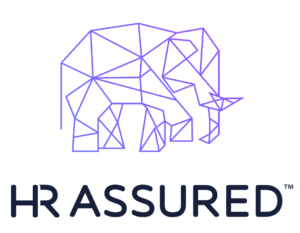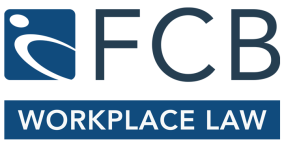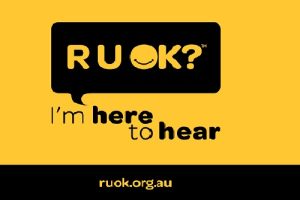Overcoming WHS compliance complexity post COVID-19
July 27, 2022As Australian businesses emerged into the light at the end of COVID’s dark tunnel, they are faced with fresh challenges in keeping their people safe at work.
We are witnessing COVID-19’s long tail – together with the permanent shift to a ‘hybrid’ work model – fundamentally changing the operating model of so many businesses. Against the backdrop of Australia’s complex Work Health & Safety (WHS) laws, businesses are grappling with how the changing work environment shifts their risk profile and what the law requires they do to control those risks and keep their people safe at work.
When contending with the changing face of the Australian workplace, businesses need not overcomplicate their risk management practices to achieve compliance. Best practice WHS compliance can be achieved by relying on tried and tested risk management practices as part of an underpinning WHS management system.
Let’s dive into how.
Understanding your duty of care
For any employer, there should be no greater concern than the thought of workers being injured on our watch at work.
It is for this reason that Australian WHS legislation imposes a legal duty of care on all persons conducting a business or undertaking (PCBU) to ensure the health and safety (both physical and psychological) of all workers at its workplace, so far as reasonably practicable.
WHS legislation imposes a further duty on PCBUs to eliminate risks to health and safety in the workplace, and if it is not reasonably practicable to eliminate risks to health and safety, minimise those risks so far as is reasonably practicable.
The challenge in WHS compliance for businesses is that what the law deems ‘reasonably practicable’ will differ in each particular scenario depending on the facts and circumstances of that scenario. As a result, there is a tendency for so many employers to get their WHS compliance framework wrong in one of two ways:
- becoming overwhelmed by the complexity involved and never really making an earnest start; or
- tying themselves up in knots in an attempt to cover each and every possible hazard/risk scenario, which naturally impacts the efficient operation of the business.
Businesses can overcome the complexity that WHS compliance presents by relying on the type of management system employed by high-risk ‘blue collar’ Australian businesses.
The ‘blue collar’ systems-based approach
While the law imposes the same duty of care on every business in Australia, what compliance looks like in practice will differ across industries and worksites. Take for example, the physical safety risks in a construction or civil engineering business, where for example workers are operating high-risk machinery and equipment, working at heights or with asbestos.
Contrast this with traditional ‘white-collar’ businesses, for whom the physical risks are less obvious and less likely to result in a serious physical injury. Yet this doesn’t itself mean that the workplace is ‘safe’. The workforces of white-collar businesses are increasingly either working exclusively from home or under a hybrid arrangement. People working from home are working in an unsupervised working environment, remain under pressure to deliver work, and are expected to meet the same deadlines as pre-COVID times.
Yet, they are doing so without social interaction with colleagues and support networks to fall back on when the pressure becomes too much. These hazards can very quickly manifest into serious psychological injuries for workers – in the same way working from heights without adequate control measures can manifest into an injury from a fall.
Blue-collar businesses have been grappling with what is required to keep their people safe in high-risk environments for some time. Sophisticated blue-collar companies manage their WHS compliance by prioritising the health and safety of their workers, establishing a proactive safety culture in the business and stacking their operations on top of their health and safety requirements. In other words, health and safety must be a foundational cornerstone in your business, with your operating model built on top rather than trying to retrofit health and safety controls around operations that fundamentally create risk for workers.
The complexity of the hybrid working model, the rise of psychological and mental health risks in the workplace, and the need for ongoing COVID-19 management mean that all businesses, not just those traditionally thought of as ‘high risk’, must embed a WHS system that is considerate of their workforce’s health and safety as priority number one.
Sophisticated, not complicated
While WHS compliance relies on an effective WHS management system, it need not be complicated or groundbreaking. WHS risks in modern workplaces have evolved and become more diverse. However, the best practice frameworks for managing those risks – whether physical or psychological – have not.
No matter the type of risk being managed, businesses should be applying a version of the following hazard/risk assessment framework:
- Identify hazards
Review your operations and identify any aspects of your work (whether tasks, plant/equipment, or the workplace) that could cause harm. - Assess risks
Understand the nature of the harm that could be caused by the hazard, how serious the harm could be, and the likelihood of it happening. - Control risks
Implement the most effective control measure that is reasonably practicable in the circumstances (using the ‘hierarchy of control’ noted below) and ensure it remains effective over time. - Review hazards
Regularly assess the identified hazards and control measures to ensure they are up to date and (in respect of the control measures) working as planned. - Consult with your workers
Consult with workers and other stakeholders at each step of the journey and ensure their feedback is considered in the eventual decisions that are made.
You’ll find a risk management procedure similar to this model at the heart of any effective WHS management system, no matter the industry or complexity of the business. Once the risk has been identified and assessed, the ‘hierarchy of control’ should be used as a guide to determine the appropriate control measures to guard against those risks. The hierarchy of control is a simple step-by-step approach to eliminating or reducing risks, and it ranks risk controls from the highest level of protection and reliability through to the lowest and least reliable protection.
Eliminating the hazard and risk is the highest level of control in the hierarchy, followed by reducing the risk through substitution, isolation, and engineering controls, then reducing the risk through administrative controls. Reducing the risk through the use of personal protective equipment (PPE) is the lowest level of control, partially because it relies on the individual worker complying with the PPE directions, and partially because it seeks to minimise the impact on the worker rather than preventing the hazard from occurring in the first place.
Embedding these simple frameworks into any business’s WHS management system and applying them to the specific hazards and risks workers face in that organisation will go a long way to ensuring that the business is adequately discharging its WHS duties, and more importantly, protecting its people at work.
Elements of a ‘best practice’ safe work system
Considering what is discussed above, ask yourself: if a serious incident happened to one of your workers, would you feel comfortable that your business’s WHS system was managing the hazards and risks that caused the worker’s injury or illness?
If you cannot be completely sure, then the likelihood is that the business is not sufficiently discharging its duty of care, your people are at unreasonable risk, and your business faces liability given the extremely harsh penalties attached to non-compliance with WHS law.
The following elements are integral components of a ‘best practice’ WHS management system:
- WHS management plan
A WHS management plan is a strategic document that assesses an organisation’s risks from the top down and charts how the risks will be controlled over a defined period. A WHS management plan is often used as the mechanism to report to a Board and Senior Management on any WHS matters to ensure the organisation’s buy-in and support WHS targets and goals starts from the top down.
- Policies, procedures, and processes
The three Ps – policies, procedures and processes – are the operational foundation of a best-practice WHS system. They’re the documented infrastructure for how the business approaches its hazard and risk identification and management, recording keeping, and incident management etc. It’s fundamental that your WHS system is thoroughly documented so that workers are provided with clear, lawful and reasonable directions about how they’re to perform their work safely, and so that in the event of an incident, your business can protect itself from liability.
- Training and induction
Once your policies are in place, workers, and particularly managers, need to understand how to comply with them and what is expected to promote a safe working environment. Regular training for workers in assessing hazards and reporting risks, incidents etc., will ensure everyone in the business is pulling together on health and safety issues and singing from the same song sheet.
- Consultation
Consultation with workers is a prescribed requirement under the model WHS law. But even more fundamentally, consultation with workers and other relevant stakeholders (such as clients, landlords and suppliers) will help you identify the hazards and risks that can lead to injuries and inspire ideas about how to control them. Your workers are the people on the ground who may encounter these risks and are in the best position to speak up about their concerns. It’s so important to take the views of workers into account when making decisions about health and safety matters and advise them of any resulting decisions.
- Supervision
The only way to ensure your workers are carrying out their safety obligations is through constant supervision and monitoring. The level of supervision required should be dictated by the level of safety control put in place to reduce risk: i.e., the less effective the control measure used, the higher the level of supervision necessary. From a psychological standpoint, employees need to feel supported and that their managers have their back. In a work-from-home environment in particular, establishing regular check-ins and supervisory mechanisms to ensure workers have adequate support will help control the psychological risks stemming from working remotely.
- Reporting
Your WHS management system must include reporting mechanisms on safety at all levels of the organisation. All workers in the business need to see and feel that safety is a cornerstone of the business’s operations and that the business puts their safety first. Again, effectively documented reporting structures will assist in putting the business in a defensible position in the event of a serious incident by evidencing the way it was managing its risks.
An effective WHS management platform
HR Assured, part of FCB, offers a complete best-practice WHS management system that caters for managing risks through its cloud-based platform, HRA Cloud, and its expert advisors available on a 24/7 basis. HR Assured clients receive an initial WHS audit of their business and a comprehensive report that identifies any gaps in compliance and recommendations on how to fix them – with the guidance of our expert advisors.
The WHS module within HRA Cloud then has tailored workflows that empower managers and employees to manage WHS health and safety in the workplace (or work-from-home space), regardless of location, free from paper-based admin.
If you need advice about your WHS management system or any other aspect relating to managing the WHS risks, please get in touch with Adrian Turner on 02 9922 5188 or email act@fcbgroup.com.au .


























